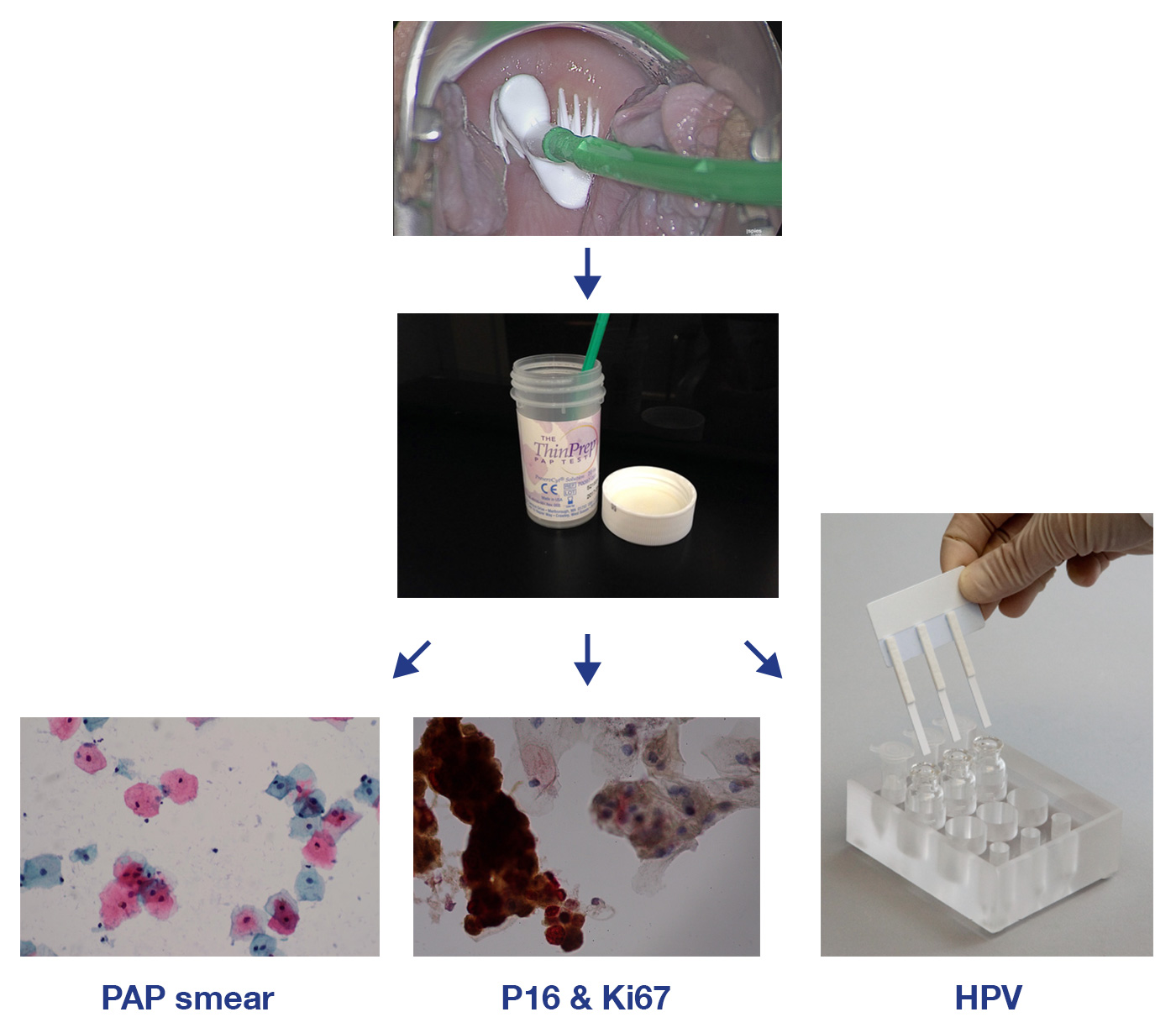Secondary Prevention of Cervical Cancer
Principle of Liquid-based Cytology
Principle of Liquid-based Cytology
Collecting cells in liquid allows various tests such as cytology, immunostaining (e.g. for p16 and Ki67) and detection of HPV.
The quality of conventional cytology is techniqually improved by the monolayer technique. Exfoliated cells are collected in liquid and applied to the glass slide in a monolayer. Evaluation of the mono-layer specimen can be done conventionally by a cyto-technician or automated. However, the problem of adequate sampling is not solved by this technique. To date, no prove has been provided that sensitivity or specificity of monolayer technique is higher as compared to the conventional technique.
Shown is the cervical sample collection system using liquid-based cytology (LBC). A brush-like instrument is used to collect cell samples from the cervix, which are then transferred to a liquid medium and sent to a central laboratory for analysis. Liquid with cells not used for the monolayer slide is stored. If abnormal cells are present, the stored sample can be analyzed for human papillomaviruses (HPV) or other molecular markers.
